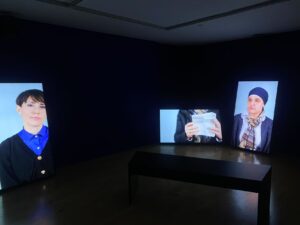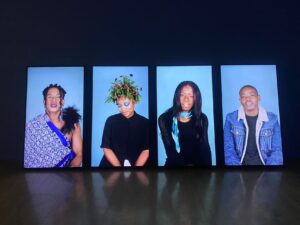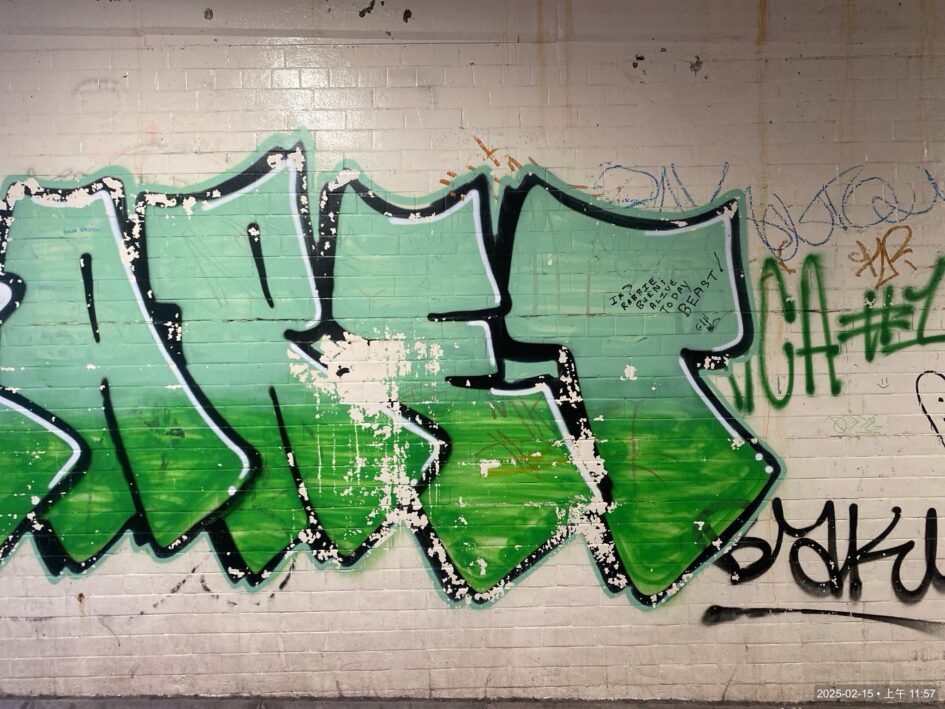I still lack a clear theme or direction for this semester’s curatorial proposal, so I plan to gather inspiration by exploring exhibitions and art media that interest me. For my first investigation, I chose the ongoing exhibition Gabrielle Goliath / Personal Accounts at the Talbot Rice Gallery.📝
🔝Week’s Focus
This week’s course continued the discussion of Broken Globalisation, focusing on the historical evolution of the biennale system and the transformation of the media space. We reviewed the cultural diplomacy from the Venice Biennale in 1895 to the Cold War era in the 1950s, and up to today’s contradictory role of the biennale between hegemony and disobedience.
The course particularly introduced the history of the Shanghai Biennale in 1996: although it initially continued the pioneering spirit of Chinese avant-garde art, it has now become highly institutionalized under government supervision (refer to the research of Du Jingyi and Yang Junwei).
In addition to the exhibition system, we also discussed the extension of the curatorial platform – from physical space to digital resources, including:
– UbuWeb
At the end of the course, the curatorial possibilities of domestic space were introduced, such as Mike Kelley’s practice of moving “home” to the streets, and the practice of the artist francottell, which will be discussed in depth next week.
🙋🏻♀️Collective Planning Meeting
For the first time, we met with our fellow curatorial team members and introduced ourselves. We found that each of us had different art backgrounds: some were good at drama and music management, some were engaged in printing and magazine publishing, and others focused on art history research. This diversity created a very promising foundation for our subsequent cooperation. We discussed what kind of exhibition format might appeal to us and also thought about what “cooperation” meant. The following are the key words and ideas that emerged during the discussion:
- Curatorial formats that interested us
– Dialogic formats, participatory workshops, performative dialogues
– Unconventional exhibition spaces: parking lots, cars, outdoors
– Site-specific & community-based formats
– Immersive exhibitions: VR/AI based connection
– Accessibility-focused formats for different sensory needs
– Collaborative or data-gathering scenarios as curatorial forms
- Thoughts on Collectivity
– Collective ≠ hierarchy; emphasize knowledge-sharing
– Listening, skill-sharing, bridge-building
– Inspired by Fluxus, Bauhaus, Transmission, Embassy, The Wig
“What if the curatorial project was less about the final output, and more about the shared process of discovery?”
📝Exhibition Review & Reading

Figure1: Yiran Gu. “Exhibition Scene of Gabrielle Goliath / Personal Accounts.” January 25, 2025. Digital photograph.
The link of exhibition information
EXHIBITION TITLE: Gabrielle Goliath / Personal Accounts
THE ARTIST: Gabrielle Goliath (b. 1983, Kimberley, South Africa)
THE CURATOR: Talbot Rice Gallery Team, in collaboration with the artist
THE VENUE: Talbot Rice Gallery, Edinburgh, UK
THE DATE: 26 October 2024 – 15 February 2025
Video in Venice Art Biennale 2024
Personal Accounts is a transnational, decolonial, black feminist project that addresses the global normativity of patriarchal violence. The work presents survivors’ personal narratives through multi-cycle video and sound installations, withholding spoken words and focusing on paralinguistic sounds like breaths and sighs. These typically ‘suspended’ and ‘content-less’ tones and sounds challenge conventional frameworks of ‘legibility’ and ‘believability’ in a different way.
Sound as an artistic medium
Upon entering the exhibition hall, I was first be attracted to the “fragmented” Gasp. Artist Goliath’s focus lies in sound, where she combines the traumatic memories and physical expressions (such as facial expressions or gestures) of 11 survivors to create a symphony of emotions and movements, greatly stirring the audience’s emotions. This reminded me of scholar Minh-ha T. Trinh’s statement in her interview record A Sound Print in the Human Archive: “Hearing is never linear, as seeing can often be in mainstream media prac-tices.” (p70) The perception of sound can be multi-dimensional and complex, involving the interaction of different sounds, rhythms, and intervals, rather than a simple sequence from one point to another. Even without knowing the specific experiences of these survivors, I could immediately immerse myself in their emotions and flashbacks of their experiences through the fragmented sounds alone. Trinh also mentioned, “…when texts, speeches, discourses donot quite fit in preestablished categories and raise questions in relation to genreand classification.” (p70) Expressions that transcend traditional boundaries, like the suspended Inhalation I mentioned earlier, often disrupt our understanding of texts or discourses, prompting us to rethink and redefine these categories and thus opening up new possibilities for understanding and interpretation. She creates an entangled, internal encounter that connects participants, artists, and audiences.
Methodology in Sound and Image Studies
Is there a methodology for the study of sound and image? After searching, I found that scholar Michel Chion proposed the audiovisual analysis method in Audio-Vision: Sound on Screen, where the audiovisual contract emphasizes the relationship between sound and image. The audiovisual contract is a symbolic agreement established between the audience and the sound and image when watching film and television works, meaning that the audience is willing to accept sound and image as part of the same entity or world when consuming audiovisual works. The audiovisual contract enhances the expressiveness and information transmission of the image through sound, influencing the audience’s perception and adding added value to the image, increasing its layers and credibility. Chion also proposed a framework of “text classification and narrative relationship” in his audiovisual analysis method, exploring the interaction between “what is said” and “what is seen”. He classified the relationship between sound and image into: counterpoint, contrast, complementarity, contradiction, expansion, and redundancy. Taking the work There’s a river of birds in migration (2023)in the exhibition as the object of analysis, in the part of the audio-visual contract, sounds such as breathing, sighing, and chanting greatly enhance the emotional impact of the visuals and build my immersive experience as a viewer. During this period, I even felt breathless because of the protagonist Sapphire’s sobbing and red eyes (Figure 2), sensing the pressure she couldn’t express in words. The combination of sound and image fills in the information gaps in the narrative that are not shown. Regarding the narrative role of text classification, the artist uses expansion and redundancy to conduct sound narration. Sound deepens the narrative depth of the visuals and increases the complexity of the narrative, further guiding the audience to connect the visuals with the external sound context.

Figure2: Yiran Gu. “Exhibition Scene of There’s a river of birds in migration(2023).” January 25, 2025. Digital photograph.
Reference Link
Peer Encounters and Exhibition Review © 2025 by Yiran Gu is licensed under CC BY-NC-ND 4.0



Leave a Reply